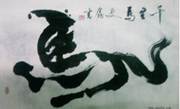In the next century we’ll be able to alter
问题:
In the next century we’ll be able to alter our DNA radically, encoding our visions and vanities while concocting new life-forms. When Dr. Frankenstein made his monster, he wrestled with the moral issue of whether he should allow it to reproduce, "Had I the right, for my own benefit, to inflict the curse upon everlasting generations" Will such questions require us to develop new moral philosophies
Probably not. Instead, we’ll reach again for a time-tested moral concept, one sometimes called the Golden Rule and which Kant, the millennium’s most prudent moralist, conjured up into a categorical imperative: Do unto others as you would have them do unto you; treat each person as an individual rather than as a means to some end.
Under this moral precept we should recoil at human cloning, because it inevitably entails using humans as means to other humans’ ends and valuing them as copies of others we loved or as collections of body parts, not as individuals in their own right. We should also draw a line, however fuzzy, that would permit using genetic engineering to cure diseases and disabilities but not to change the personal attributes that make someone an individual (IQ, physical appearance, gender and sexuality).
The biotech age will also give us more reason to guard our personal privacy. Aldous Huxley in Brave New World, got it wrong: rather than centralizing power in the hands of the state, DNA technology has empowered individuals and families. But the state will have an important role, making sure that no one, including insurance companies, can look at our genetic data without our permission or use it to discriminate against us.
Then we can get ready for the breakthroughs that could come at the end of the next century and the technology is comparable to mapping our genes: plotting the 10 billion or more neurons of our brain. With that information we might someday be able to create artificial intelligences that think and experience consciousness in ways that are indistinguishable from a human brain. Eventually we might be able to replicate our own minds in a "dry-ware" machine, so that we could live on without the "wet-ware" of a biological brain and body. The 20th century’s revolution in infotechnology will thereby merge with the 21st century’s revolution in biotechnology. But this is science fiction. Let’s turn the page now and get back to real science.
Dr. Frankenstein’s remarks are mentioned in the text()
A. to give an episode of the DNA technological breakthroughs
B. to highlight the inevitability of a means to some evil ends
C. to show how he created a new form of life a thousand years ago
D. to introduce the topic of moral philosophies concerning biotechnology
